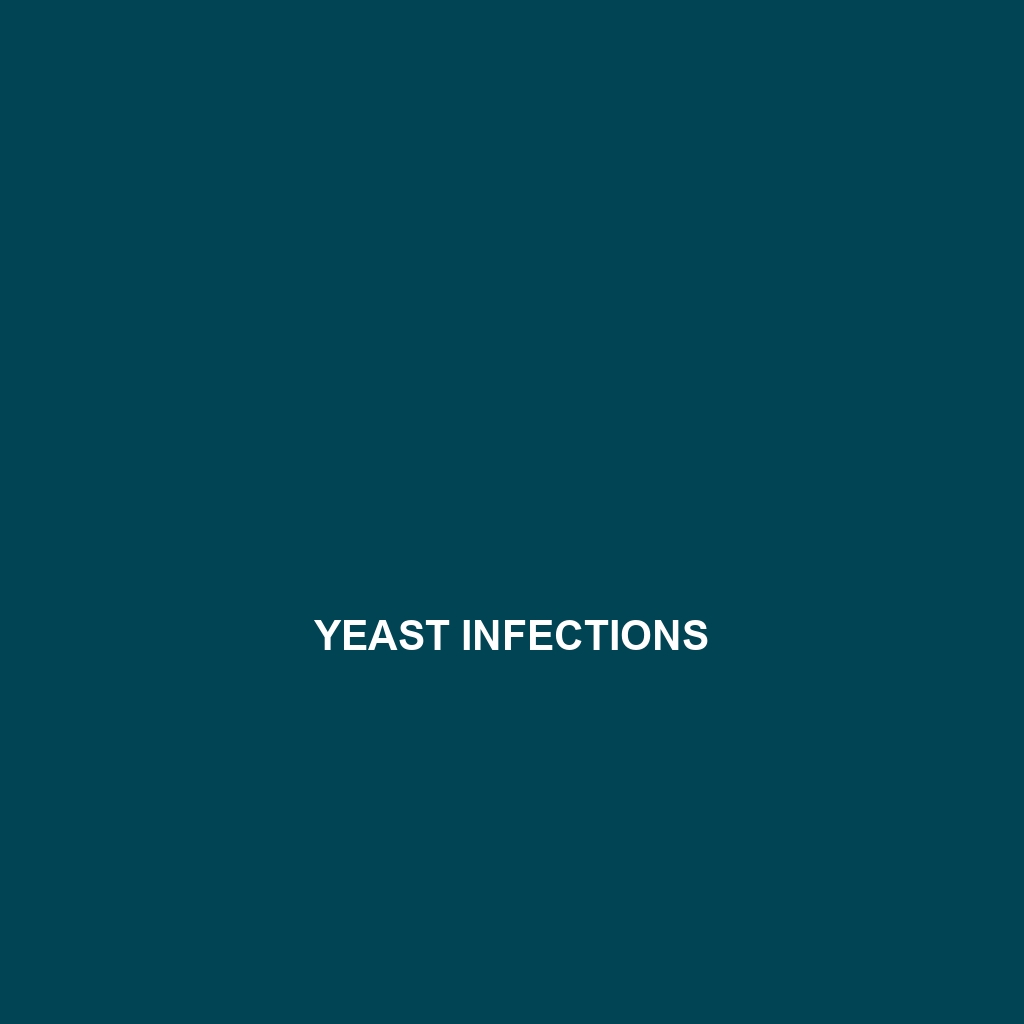Yeast Infections:
Definition and Description of Yeast Infections:
Yeast infections, medically known as candidiasis, are infections caused by an overgrowth of yeast, predominantly the species Candida albicans. This type of fungus is naturally present in small amounts in the human body, particularly in areas such as the mouth, throat, gut, and vagina. However, when the balance of microorganisms is disrupted, yeast can multiply excessively, leading to an infection. Yeast infections can occur in various parts of the body and may affect both men and women, although they are more commonly associated with women’s health.
Causes of Yeast Infections:
The causes of yeast infections are varied and can include underlying medical conditions such as diabetes, which can impact the body’s sugar levels and promote yeast growth. External factors, such as taking antibiotics, can disrupt the normal microbial flora and facilitate an overgrowth of yeast. Additionally, hormonal changes related to pregnancy, menstrual cycles, or birth control use can increase susceptibility. Genetic predispositions may also play a role in an individual’s likelihood of developing a yeast infection.
Associated Symptoms of Yeast Infections:
Common symptoms of yeast infections include:
- Itching and irritation in the affected area
- Unusual discharge (in vaginal infections, this is often thick and white)
- Redness and swelling
- Pain during intercourse or urination
- Rash or sores (in skin infections)
Diagnosis of Yeast Infections:
Diagnosis of yeast infections typically involves a physical examination and a review of medical history. Healthcare professionals may perform tests such as a vaginal swab or a culture test to identify the specific type of yeast. In some cases, a urine test may also be conducted. Proper diagnosis is crucial, as symptoms can mimic those of other conditions.
Risk Factors for Yeast Infections:
Certain individuals are at higher risk for developing yeast infections. These include:
- Women with diabetes or those undergoing antibiotic treatment
- Pregnant women
- Individuals with weakened immune systems
- People who use hormonal contraceptives
- Individuals with a high-sugar diet
Complications of Yeast Infections:
If left untreated, yeast infections can lead to complications such as recurrent infections, which may require more aggressive and prolonged treatment. In some instances, a systemic candidiasis can occur, which is a more severe condition requiring urgent medical intervention. Chronic yeast infections may also cause significant discomfort and distress, impacting daily life.
Treatment Options for Yeast Infections:
Treatment for yeast infections can range from over-the-counter antifungal medications, such as creams or suppositories, to prescription oral antifungals. Home remedies, such as probiotics, may also help restore balance. However, it is important to consult a healthcare provider before starting any treatment to ensure it is appropriate for the specific type of infection.
When to See a Doctor for Yeast Infections:
Individuals should seek medical advice if they experience severe symptoms, recurrent infections, or if home treatments do not alleviate the condition. Additionally, those with underlying health conditions or weakened immune systems should consult their healthcare provider promptly upon experiencing symptoms.
Prevention of Yeast Infections:
Preventing yeast infections can involve several strategies, such as:
- Wearing loose, breathable clothing and cotton underwear
- Avoiding douching and using scented menstrual products
- Maintaining good hygiene practices
- Limiting sugar intake
- Incorporating probiotics into your diet
Statistics and Prevalence of Yeast Infections:
Statistical data indicates that about 75% of women will experience at least one yeast infection during their lifetime, and nearly half will have recurrent episodes. In men, while less common, yeast infections still occur and are often linked to unmet risk factors.
Personal Stories or Case Studies about Yeast Infections:
Many individuals have shared their experiences with yeast infections, highlighting the often unexpected nature of the condition and the emotional impact it can have. Medical professionals emphasize the importance of education and awareness, which can empower individuals to seek treatment sooner and reduce stigma associated with these infections.
Myths and Misconceptions about Yeast Infections:
Common myths about yeast infections include the belief that they are solely a result of poor hygiene, or that it is a sexually transmitted infection (STI). In reality, while poor hygiene can contribute, yeast infections often arise from natural imbalances in the body, and most cases are not transmitted through sexual contact.
Support and Resources for Yeast Infections:
Support groups and resources are available for those dealing with yeast infections. For more information, visit this support page for additional resources and help.
Conclusion about Yeast Infections:
In conclusion, yeast infections are a common yet often misunderstood health concern. Understanding the causes, symptoms, diagnosis, and prevention methods can empower individuals to manage their health more effectively. If you suspect a yeast infection, consulting with a healthcare professional is a vital step toward relief and recovery.
